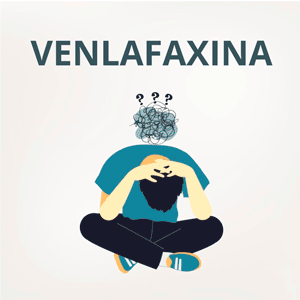PUBLICIDAD
Actualidad y Artículos | Adictivos, Trastornos relacionados con sustancias y trastornos adictivos Seguir 125 Favorito
¿Nada o un poco? ¿Mucho o demasiado? La impulsividad como marcador de gravedad en niveles problemático y no problemático de uso de alcohol e Internet

-
Autor/autores: Navas, J. F; Torres, A.; Cándido, A; Perales, J. C.
,Artículo,
Artículo |
Fecha de publicación: 04/09/2014
Artículo revisado por nuestra redacción
Artículo revisado por nuestra redacción
Resumen Este estudio pretende explorar la relación entre impulsividad y consecuencias negativas percibidas del consumo de alcohol y del uso de Internet. Específicamente si las dimensiones de impulsividad urgencia positiva y negativa, falta de premeditación, falta de perseverancia y búsqueda de sensaciones están asociadas a (1) la aparición de las primeras consecuencias negativas, y ...
Este contenido es exclusivo para suscriptores.
Crea tu cuenta gratis y léelo completo ahora.
¿Ya estás registrado? Inicia sesión aquí.
Resumen
Este estudio pretende explorar la relación entre impulsividad y consecuencias negativas percibidas del consumo de alcohol y del uso de Internet. Específicamente si las dimensiones de impulsividad urgencia positiva y negativa, falta de premeditación, falta de perseverancia y búsqueda de sensaciones están asociadas a (1) la aparición de las primeras consecuencias negativas, y a (2) la transición entre un malestar indicativo de un posible problema y otro indicativo de un muy probable problema, en el consumo de alcohol y uso de Internet.
Para ello, 709 universitarios de primer año fueron evaluados mediante cuestionarios de impulsividad (UPPSP) y consecuencias negativas percibidas de conductas adictivas (Multicage CAD4). Utilizando análisis de regresión logística se comprobó que, en el caso del alcohol, la urgencia positiva y la falta de premeditación distinguían entre participantes con puntuación Multicage 0 (ningún problema) y 1 (aparición inicial de consecuencias negativas), mientras que la urgencia negativa lo hacía entre puntuaciones 2 y 3/4 (transición entre un posible y un muy probable problema clínico).
Respecto al uso de Internet, ninguna dimensión resultó predictiva de la aparición de las primeras consecuencias negativas, y la urgencia positiva marcó la transición hacia un muy probable problema clínico. La urgencia negativa aparece pues como un indicador de patologización del consumo de alcohol. Por su parte, el uso en niveles subclínicos parece relacionarse con la impulsividad elicitada por emociones positivas. Para Internet no se observó este patrón, lo que puede indicar diferencias en la etiología del uso abusivo de Internet respecto al consumo de sustancias.
Acceso al texto completo.
Para poder visualizar el texto completo, necesita tener instalado el Adobe Reader, si usted no lo tiene puede bajárselo gratuitamente desde la dirección:
http://get.adobe.com/es/reader/
Abstract
Este estudio pretende explorar la relación entre impulsividad y consecuencias negativas percibidas del consumo de alcohol y del uso de Internet. Específicamente si las dimensiones de impulsividad urgencia positiva y negativa, falta de premeditación, falta de perseverancia y búsqueda de sensaciones están asociadas a (1) la aparición de las primeras consecuencias negativas, y a (2) la transición entre un malestar indicativo de un posible problema y otro indicativo de un muy probable problema, en el consumo de alcohol y uso de Internet.
Para ello, 709 universitarios de primer año fueron evaluados mediante cuestionarios de impulsividad (UPPSP) y consecuencias negativas percibidas de conductas adictivas (Multicage CAD4). Utilizando análisis de regresión logística se comprobó que, en el caso del alcohol, la urgencia positiva y la falta de premeditación distinguían entre participantes con puntuación Multicage 0 (ningún problema) y 1 (aparición inicial de consecuencias negativas), mientras que la urgencia negativa lo hacía entre puntuaciones 2 y 3/4 (transición entre un posible y un muy probable problema clínico).
Respecto al uso de Internet, ninguna dimensión resultó predictiva de la aparición de las primeras consecuencias negativas, y la urgencia positiva marcó la transición hacia un muy probable problema clínico. La urgencia negativa aparece pues como un indicador de patologización del consumo de alcohol. Por su parte, el uso en niveles subclínicos parece relacionarse con la impulsividad elicitada por emociones positivas. Para Internet no se observó este patrón, lo que puede indicar diferencias en la etiología del uso abusivo de Internet respecto al consumo de sustancias.
Acceso al texto completo.
Para poder visualizar el texto completo, necesita tener instalado el Adobe Reader, si usted no lo tiene puede bajárselo gratuitamente desde la dirección:
http://get.adobe.com/es/reader/
Abstract
This study aims to explore the relationship between impulsivity traits and perceived negative consequences of alcohol consumption and Internet use. More specifically, impulsivity traits positive and negative urgency, sensation seeking, lack of premeditation, and lack of perseverance in (1) the occurrence of initial negative consequences linked to use, and (2) the transition from consequences possibly indicating a problematic behavior to consequences very likely indicating a clinical problem.
For this, 709 firstyear college students were assessed using the UPPS-P impulsive behavior scale, and the Multicage CAD-4 scale for addictive behaviors. Logistic regressions were used to discriminate (a) between individuals with a 0-score and individuals with a 1-score in the Multicage scales (low severity range), and (b) between individuals with a 2-score and individuals with 3/4-score (high severity range), separately for alcohol and Internet use. For alcohol use, positive urgency and lack of premeditation marked the transition from 0 to 1 scores, whereas negative urgency marked the transition from 2 to 3/4 scores.
For Internet use, however, none of the UPPS-P dimensions significantly marked the transition from 0 to 1 (occurrence of initial negative consequences), and positive urgency marked the transition from 2 to 3/4 (from possible to very likely problematic behavior). Negative urgency arises as a pathologization marker for alcohol abuse, whereas changes in non-clinical levels are linked to impulsivity elicited by appetitive emotions. Impulsivity does not seem to play any role in low severity levels of Internet use, and positive urgency marks the transition between high severity scores. These differential patterns are indicative of different etiological paths for excessive Internet use and substance abuse




